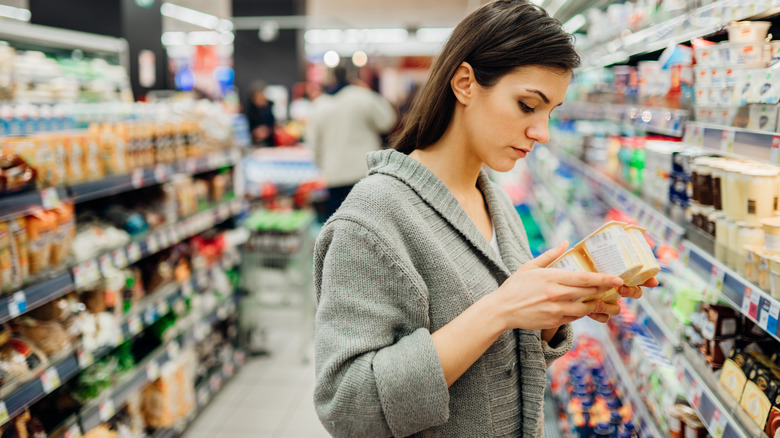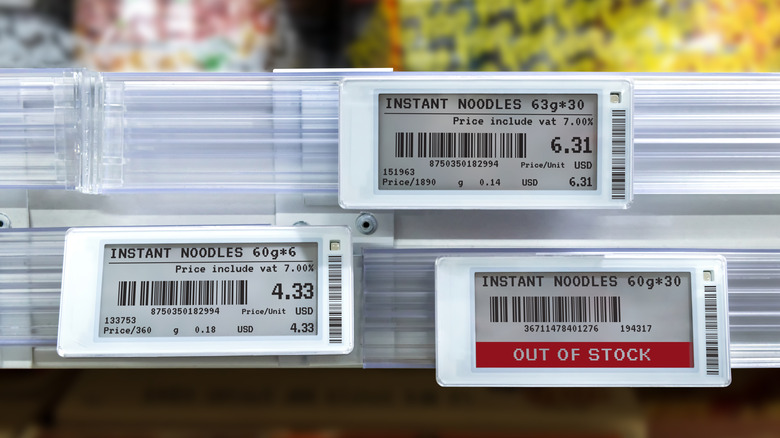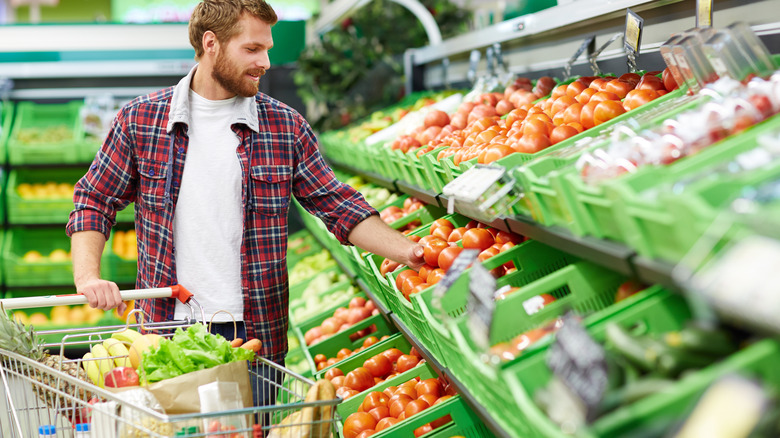The Important Number You're Ignoring On Grocery Store Price Tags
Over the past few years, steadily rising food prices have encouraged us all to be savvier shoppers. But finding the best deals at local supermarkets isn't always as simple as it seems. For example, it's not just a question of comparing retail price tags, as similar products may not always be sold in packages of the same size.
To ensure you're getting the best value, you need to check the price per ounce or pound. This telling number is called the unit price. Most of us are probably used to seeing by-the-pound numbers when shopping for produce or perishable items. But the unit price can be found for all foods, often while you're still comparing items in the store's aisle. That's because the unit price is typically listed next to the retail prices on supermarket shelf tags for products.
This feature allows you to compare apples to apples, so to speak. Meaning, you'll be able to see which products are the most affordable, not just those that seem like they're great deals based on packaging. In fact, once you start looking at unit costs, you'll discover that bigger packaging doesn't always equate to better value, as often it's simply the same unit pricing adjusted to a different box size.
How to determine unit prices for all grocery products
Unit pricing is often listed not just on shelf tags, but on price tags and even supermarket receipts. However, there is no nationwide code mandating the presence of this information, and regulations regarding unit pricing can vary from state to state. So it's possible unit pricing may not be displayed where you live. Fortunately, though, unit pricing is relatively easy to calculate. For example, say you want to buy a food product that costs $4.99 and contains 24 ounces. Divide the first number by the second, and you have a unit price of about .21 cents.
Even if your local supermarket does display unit prices, being able to calculate the unit price (most smartphones have calculators, for the math-averse) will come in handy in the case of products on sale, or with items for which you may have a coupon. No, it won't tell you which foods are the highest quality. But quantitatively, unit price will unerringly tell you which products offer the best value, and thus allow you to get the most out of your grocery budget.
How to compare value when shopping
In Australia, a 2023 Australian survey of shoppers by Choice, a consumer advocacy group, showed only 60 percent were able to locate the best deal among products of different sizes and retail prices when the unit price wasn't displayed. However, that number increased to 74 percent when the unit price was available. So it can make a significant difference, especially when you consider that the average total spent per supermarket visit in the U.S. is over $150, per Drive Research.
Shopping for items based on unit price can help you maximize value, but ideally, it should be one of several tools you use when shopping. For example, several supermarket chains have apps with reward features or discounts. Using these, as well as monitoring items on sale and available coupons, will also help you find better values. It bears noting, though, that these great values matter far less if you don't finish the products you buy before they spoil, or pass their expiration date.
But paying attention to unit pricing can help in this regard, too, since you may be able to buy smaller package sizes that are less likely to go to waste, secure in the knowledge that you're not paying more (or much more) for the privilege.



